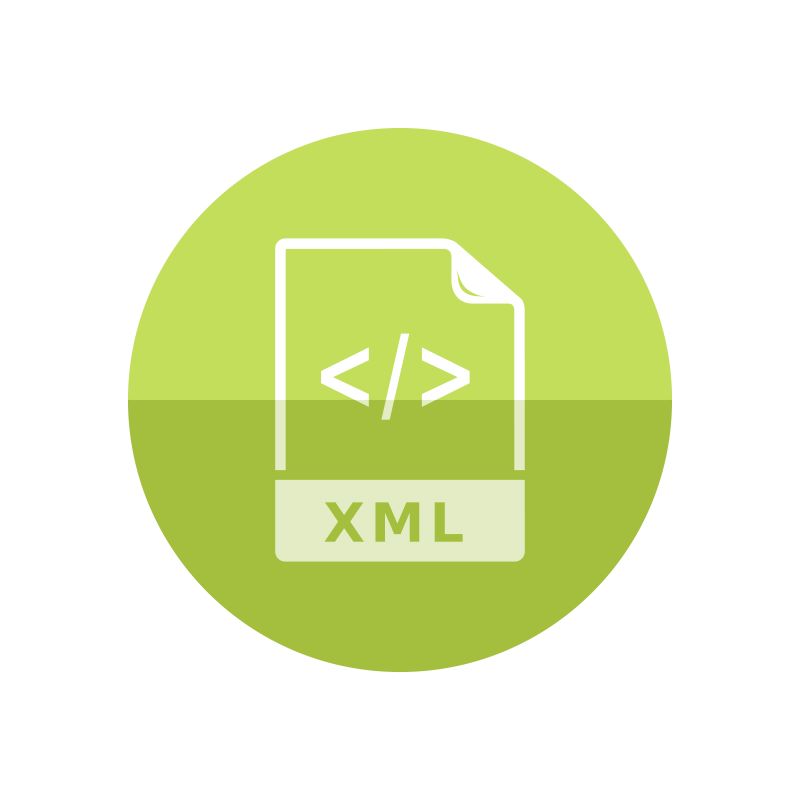The Ultimate Guide To Parse XML Files In Python
Web scraping can be lucrative for any business, but it comes with some challenges. If you rely on web scraping to attain marketable data from the internet, you have probably encountered delays, bans, and downtime. When your web scraping operation cannot get sufficient data quickly enough, you risk losing your edge to a competitor and the trust of your customers. Read more about parse xml file in python.
Web scraping tools must be able to parse the languages that store and organize data online to extract that information. By learning how to parse XML in Python, you can get the most out of your web scraping proxies and ensure you don’t fall behind the competition in the data race.
What Is an XML File?

XML stands for eXtensible Markup Language. The XML language is a major building block for storing and transferring data files on the internet. As a file format, XML also provides coherent rules for encoding documents stored on the internet.
An XML file is a file in which the data is organized according to XML rules. You can recognize an XML file from the .xml extension in its file name. The act of accessing, reading, and collecting the data content of an XML file is called parsing.
XML uses an API called the Document Object Model, or DOM, for navigating an XML file. DOMs provide a logical structure for XML file data that allows it to be easily parsed by human and machine users.
XML’s DOM works as a top-down hierarchical structure, where broader commands and organizational texts appear at the top of a chain. Elements that proceed from them appear below. The DOM structure of an XML file is often compared to a tree.
Transferring data between web applications
XML is extremely useful because it allows easy access to web data between different users, programs, and systems.
Data files are stored all over the internet in various programs and applications. If these programs and applications could not send data files to each other, the entire internet would become unusable. Complex data-gathering tasks like web scraping would be impossible.
For this data to transfer easily from one web application to another, both must speak the same language. XML is that language.
Human and machine compatibility
XML is designed to be readable by human and machine web users, which can be challenging to pull off. Humans and machines process and comprehend data differently.
Human web users almost always need web data in a coherent, written language displayed on a user-friendly interface. Machine users, such as APIs and web scraping programs, require data to be structured according to consistent rules.
Human readability
As both a markup language and a file format, XML is easy to understand. Its treelike DOM structure is simple for humans to work with on a display interface. And XML tags are particularly useful for creating markup symbols when writing XML code. For example, if you were writing an XML display about a movie, you could easily create a convenient DOM structure under the main header of <movie>. The “<” and “>” symbols serve as user-friendly tags to create the root tags for each XML file.
The second tag under the broader heading of <movie> would be the next degree of specificity. For an XML file on a particular movie, you would create a secondary tag with the movie’s title. In DOM, the tag would be the movie’s title bracketed by <title> and </title> on the left and right sides, respectively.
So, if you were creating an XML file about Raiders of the Lost Ark, the XML code for the title tag would look like this:
<title> Raiders of the Lost Ark </title>
Under the movie title tag, you could continue to build your XML file with more specific tags about the movie itself. For example, you might have a tag for the movie’s genre, which might look like:
<genre> Action/Adventure </genre>
A tag for the movie’s director would look like this:
<director> Steven Spielberg </director>
The complete XML file for Raiders of the Lost Ark would look something like this:
<movie>
<title> Raiders of the Lost Ark </title>
<genre> Action/Adventure </genre>
<director> Steven Spielberg </director>
</movie>
The straightforward format is easy to work with, even for those with little coding experience.
Machine readability
XML is also easily readable by machines, thanks to its consistent structure. What sets XML apart from other programming languages is that its structure was designed with machine readability as a foundation rather than an addition. Other popular languages, such as HTML, are ultimately human-readable languages that feature markups to make them readable for machine programs. However, this markup can sometimes be incomplete or inaccurate, which leads to errors in the data display and transfer.
On the other hand, XML is designed with a coherent, consistent data structure for the specific purpose of creating data files. Since this structure is also easily read and employed by human users, XML may be the “best of both worlds” in terms of readability.
What Is the Difference Between HTML and XML?

XML and HTML are closely related enough that any effective web scraping operation must be able to navigate both.
Understanding the critical differences between HTML and XML will help you maximize the effectiveness of your Python-based web scraping programs when extracting data from XML files.
HTML
HTML, or Hypertext Markup Language, is a popular type of markup language used to design web pages and web applications. As a markup language, HTML uses standardized symbols and text codes inserted into a text to organize how this data will be displayed on a webpage or application.
Web browsers display the data they receive from a web server with the help of a readable markup language that provides the structure needed to organize the data. The data sent by the web server needs to be written within the standardized rules of the markup language to be displayed correctly.
These rules describe everything from images to embedded videos to the overall structure of the data as it appears on the website. As the most widely-used markup language on the internet today, HTML is in the majority of web data that transfers from web servers to browsers for display on web pages.
XML
XML serves similar roles to HTML when it comes to web data transference. But there are a few key differences:
- While XML is a markup language that contains terms for describing the organization and structure of web data displays, it is primarily a file format language. This means it specifies the storage, access, and extraction of the data it describes.
- XML is a dynamic language, whereas HTML is more of a static language. While the primary purpose of HTML is generally the effective structuring of data displays on a web page, the main purpose of XML is the serialization of rules for storing, transferring, and restructuring that data.
- XML was designed to be both human- and machine-readable. Web scraping programs must be able to parse all data on an XML file while working within the human-readability framework of that data. This is particularly important if you want the web data you parse from an XML file to be organized and readable on another file. A Python-based web scraping program will likewise need the capacity to parse XML files in Python according to the machine-readability rules while maintaining the language’s human-readability capacity.
What Is a Node in XML?

When learning how to parse XML files in Python, you’ll need to have a good handle on the basic components of an XML file system. One of the most important is an XML node.
A node in XML is anything and everything within an XML file. XML nodes refer to each component of an XML file and the larger organizing structures containing those components.
For example, each element within an XML file corresponds to an element node. However, the XML file as a whole corresponds to the document node. The document node is comprised of individual elements that each have their nodes.
XML has a few more specific types of nodes that are useful when learning to parse XML files in Python.
Root nodes
An XML file’s root node is the most top-tier element in an XML file’s DOM structure. The name is a bit of a misnomer. While roots are typically in the ground, XML root nodes appear at the topmost element in an XML text tree due to the top-down structure of the XML language.
Still, the root node, like a plant root, is the most fundamental element in the file and the one from which all other elements stem. In XML files, the root node also corresponds to the document node. But the root node and the document node are separate conceptual frameworks.
Parent nodes
A parent node is a node that has other elemental nodes proceeding from it. In the XML language’s tree structure, a parent node is directly above nodes that stem from it. An XML file’s root node is also a parent node for all of the nodes within the file. However, a file usually has several other parent nodes below the main root node.
Child nodes
In the XML language’s tree structure, a child node is a node immediately descended from another node (which serves as its parent node). Note that elemental attributes within XML text are generally considered distinct from child nodes.
What Is Parsing in XML?

If you use Python-based programs for your web scraping needs, you must understand how to parse XML files in Python. You can boil the process of parsing XML files down to a few steps to access, read, and extract the data in an XML file.
Learning how to parse XML files in Python can be challenging for many novices. You may have heard rumors about the difficulty of XML parsing in Python. The lack of a definitive best parsing model for XML is a major factor.
Fortunately, parsing XML files in Python is not nearly as daunting as it may seem. The Python library has several excellent parsers available. And with a partner like Rayobyte to guide you through the process, you can get the most out of your XML parsing without too much effort.
The Best Way To Parse XML in Python

You’ll need to choose an XML parsing model before parsing XML files in Python. The model that works best for your needs may vary depending on the data you need, how much of it you need, and how quickly you need to extract it. But if you use Python for your web scraping operations, you will generally want to focus on a few key XML parsing models.
DOM
DOM is the most common model for structuring and parsing the data in XML files. And DOM’s easy-to-parse treelike structure lets it integrate easily with HTML data. This makes it the go-to model for structuring and storing XML data online. When today’s web servers transfer XML data to a webpage via a browser, they most often organize it in a DOM model.
The DOM parsing model is relatively simple. Its basic, hierarchical structure allows it to function based on a few standardized operations, making it the most versatile and convenient XML parsing model. Plus, the document tree structure of DOM allows it to store abstract representations of an entire XML document in memory, which gives users random access to each element node in a particular file.
However, as an XML parsing model, DOM is not without its weaknesses. These weaknesses are especially apparent when it comes to web scraping, where time and efficiency are crucial. While DOM provides abstract representations of an entire XML file, constructing these representations can be excessively time-consuming on the user’s end.
DOM also limits the data capacity of a particular file during the parsing process. This is because XML parsing in DOM must go through the entire file at once. If your program or application has limited memory, the parsing process may exceed its data storage capacity. For these reasons, DOM works best as an XML parsing model when time and data size are less important.
SAX
Thanks to the shortcomings of DOM, web communities began to develop a few alternative XML parsing models. One of the most widely-used DOM alternatives is the Simple API for XML or SAX. SAX was designed to make up for DOM’s time and data storage constraints.
The SAX API uses event-based streaming rather than operating on the entire XML file at once. It can parse individual elements within an XML file rather than the entire document node. With SAX, you can discard elements of an XML file if they are irrelevant to your needs. You can also parse large XML files much more easily than with DOM.
However, SAX is much more complex than DOM. SAX tends to allow only read-only parsing, which can make it much more cumbersome when trying to modify specific nodes within an XML tree.
StAX
Another widely-used XML parsing alternative to DOM is the Streaming API for XML or StAX. StAX (and, to a lesser extent, SAX) was developed out of the Java community and is less widely used in Python-based applications.
StAX was initially built using the basic structure of the SAX parsing model, so it has many of the same strengths and weaknesses. The main difference is that StAX uses a pull parsing model instead of a streaming parsing model. In a pull parsing model, users can advance a cursor object through an entire XML document and call parsers directly on demand.
This gives users even greater control during the parsing process. However, with more control comes more complexity, at least compared to DOM.
How to parse an XML file in Python
Once you have found a parsing model that works for you, the next step of parsing an XML file in Python is to choose an XML parser from Python’s library.
Some of the most popular Python XM parsers include the following.
XML.dom.minidom
Xml.dom.minidom is a basic parser for XML files that uses the DOM model. In most cases, you can use xml.dom.minidom to parse an XML file in Python for more basic web scraping tasks. However, note that this parser is one of the older ones. Its age and lack of proper documentation limit its usefulness for more complex parsing tasks.
xml.dom.pulldom
The xml.dom.pulldom parser uses pull parser tools to produce a representation of a given element in an XML tree within the DOM model. When using xml.dom.pulldom to parse XML files in Python, you will be responsible for intentionally pulling targeted events from a larger stream of XML data.
xml.sax
As the name suggests, xml.sax is a parser designed for parsing XML in Python using the SAX model. Since SAX was derived from the Java language, xml.sax requires a few Java-derived commands, even when working within Python. For example, you must provide a content handler by subclassing a specific base class.
xml.etree.ElementTree
One downside of parsing XML files in Python is that the previous parsers were derived from Java. To solve this problem, Python users developed the xml.etree.ElementTree parser, widely known as ElementTree. ElementTree is an API that lets you easily parse XML files in Python without importing conventions or language from Java.
How to parse an XML file in Python using the Python library
Once you have chosen a parser from the Python library, you can begin the parsing process with that parser’s given commands. Since web scrapers commonly parse XML files in the DOM model, you will most likely encounter the commands from either xml.dom.minidom or ElementTree. Fortunately, both parsers have a convenient parse command.
If you want to know how to parse an XML string in Python, you can employ commands from the Python library parsers to extract data from individual XML strings. For example, the fromstring command in ElementTree can parse a string directly into an XML element.
Following the parse command, you can convert the parsed data to a Python dictionary object using an untangle.parse command. If you are parsing an XML file in Python for web scraping, you can save the scraped data in a CSV file.
One advantage of these parsers is that they can extract data from infinitely-nested XML files. This way, you can employ multilevel XML parsing in Python. It doesn’t matter how many nested layers of XML data are within a file.
Get the Best XML Tools With Rayobyte

Parsing XML files is an essential step when web scraping. Effective web scraping needs effective parsing capabilities that are compatible with the main languages of the internet. If you use Python for your web scraping operations, your program must know how to parse XML files in Python.
And no matter what models or parsers you use, parsing XML files in Python is much easier with the best resources. A proxy service will help you effectively parse vital data from the internet. Rayobyte will help ensure you and your team have the best proxy resources for XML parsing and other web scraping needs. Check out our blog for more information on web scraping, proxies, and Python-based web solutions. Or, get in touch with Rayobyte to start your free trial of our elite private proxy solutions.
The information contained within this article, including information posted by official staff, guest-submitted material, message board postings, or other third-party material is presented solely for the purposes of education and furtherance of the knowledge of the reader. All trademarks used in this publication are hereby acknowledged as the property of their respective owners.






